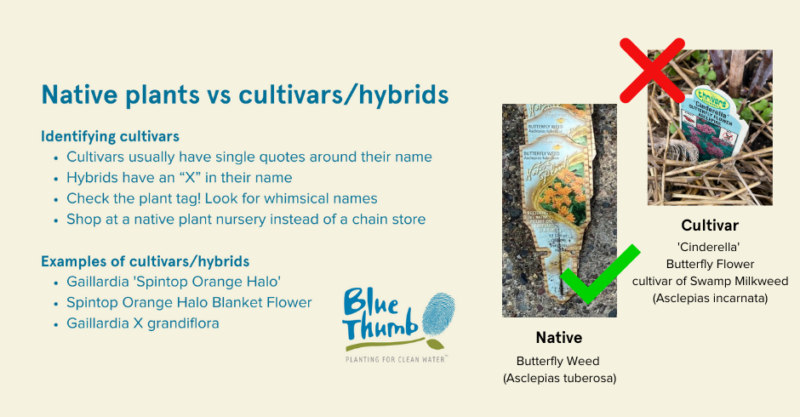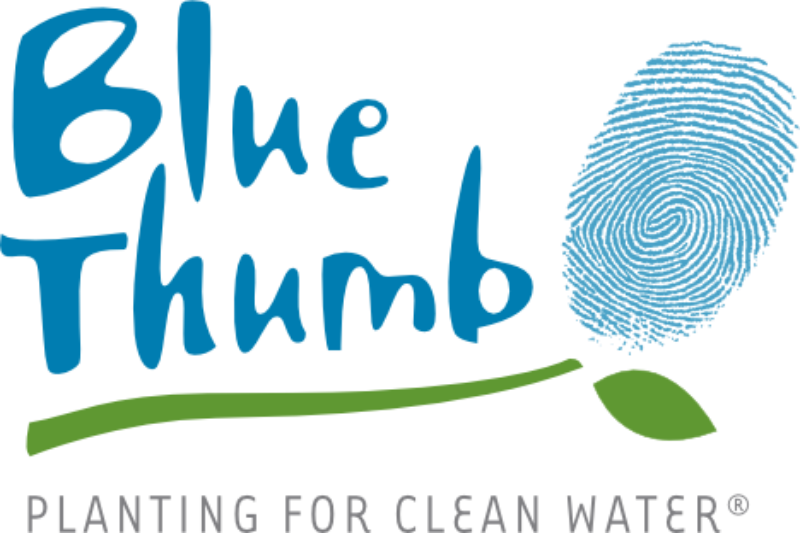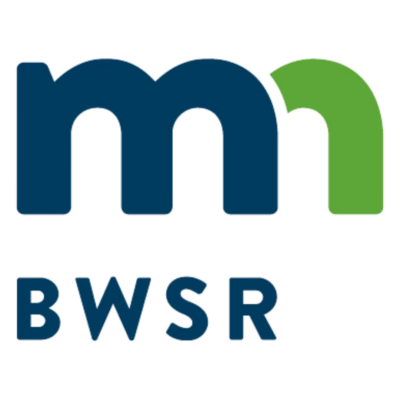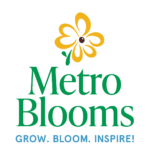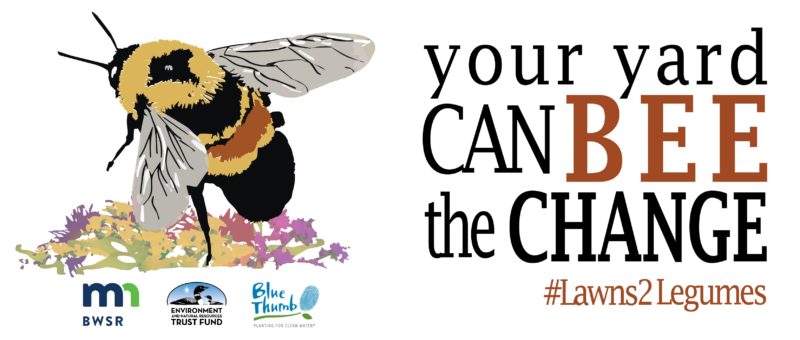 The Lawns to Legumes program has requirements on the types of purchases that can be eligible for reimbursement. Refer to the guide below when purchasing native plants and materials for your pollinator habitat project. If you have any questions about whether a purchase is reimbursable, please email the L2L Helpline (l2lhelp@bluethumb.org). Refer to your participant agreements (emailed to you after you filled out the Confirmation Form) for additional grant commitments.
The Lawns to Legumes program has requirements on the types of purchases that can be eligible for reimbursement. Refer to the guide below when purchasing native plants and materials for your pollinator habitat project. If you have any questions about whether a purchase is reimbursable, please email the L2L Helpline (l2lhelp@bluethumb.org). Refer to your participant agreements (emailed to you after you filled out the Confirmation Form) for additional grant commitments.
Download a printable version of the L2L Eligible Expenses Guide here.
BACK TO GRANTEE GUIDE
Native Plants and Seeds
To make the biggest impact for pollinators, Minnesota native plants and seeds should be the primary focus of your project. To be reimbursed, your project must involve the addition of new native plants within the grant period. Non-native plants, hybrids, and cultivars are not reimbursable.
Eligible Minnesota native plants and seeds include: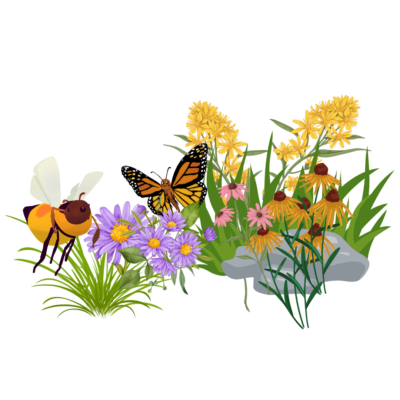
-
- flowers/forbs
- bare root plants
- grasses, sedges, and ferns
- trees and shrubs
- seeds
- All-Season Blooms: Try to incorporate at least three plant species that bloom during spring, summer and fall, with higher diversity strongly encouraged.
- When possible, buy native plants and seeds from within 175 miles of project location.
- Avoid purchasing plants treated with neonicotinoids/systemic pesticides. Before purchasing plants, check with your vendor to ensure that their plants are neonicotinoid-free.
To choose native plants, use the Blue Thumb Plant Finder Tool, or check out the native plant lists and design templates on our Resources page.
Other Project Expenses
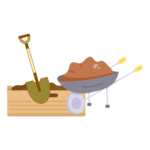 Depending on the needs of your project, the following eligible materials can help your planting be successful. Remember to keep native plants the focus of your project.*
Depending on the needs of your project, the following eligible materials can help your planting be successful. Remember to keep native plants the focus of your project.*
- Mulch (non-dyed preferred)
- Compost
- Edging (non-plastic preferred)
- Fencing for herbivore protection (Chicken wire and stakes, mesh baskets, etc. Repellants are not reimbursable.)
- Stake for your L2L yard sign
- Plant markers/labels for identification
- Equipment rental fees
- Delivery fees
- Blue Thumb/Metro Blooms workshops
- For raised bed and container gardens: soil**, containers, planters, and raised bed materials up to $100
If Needed
If you are a beginning gardener or dealing with a special project site, these eligible purchases may be helpful to you only if needed.
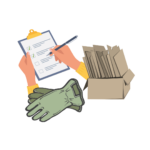 Gardening equipment purchases that total up to, but no more than $50 (trowels, gloves, etc.)
Gardening equipment purchases that total up to, but no more than $50 (trowels, gloves, etc.)- Sheet mulching materials including cardboard or other wood fiber-based products
- Biodegradable weed suppression material including paper-based landscaping fabric and staples. Plastic-based fabric is not reimbursable. For staples, non-plastic or organic products are preferred.
- Hiring helpers or consultation, design, site prep, or installation services. All contracted work must be through the current grant period to be eligible for reimbursement.
- Use the Blue Thumb Partner Finder to find services near you!
- For hiring helpers (family, neighbors, etc.), you can use our cash receipt template to make a receipt:
*BlueThumb/MN BWSR has the right to refuse reimbursement if it is clear that project funds were not used for the primary purpose of creating native pollinator habitat.
**Soil is not an eligible expense for projects that don’t involve containers, as native plants can be selected for a wide range of soils in Minnesota. Dry prairie plants are well adapted to sandy, nutrient poor soils.
Sales tax is reimbursable on all eligible Lawns to Legumes purchases.
Cultivars and Non-Native Plants
Non-native cultivars, “nativars,” hybrids and annuals are not eligible for reimbursement, except for the exceptions listed below. For more guidance, this handout provides tips for identifying whether a plant is native or a cultivar.
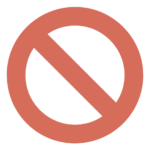
Cultivar and Non-Native Exceptions
Lawns to Legumes provides reimbursement for several non-native and cultivar plants due to their functionality in pollinator lawns, adaptability to Minnesota’s climate, or benefit to pollinators. If you are not sure whether a plant is eligible for reimbursement, please email the L2L Helpline (l2lhelp@bluethumb.org)
| Common Name |
Scientific Name |
Reason for Exception |
| Fescue grasses |
All Festuca species |
Pollinator lawn species |
| Self-heal |
Prunella vulgaris |
Pollinator lawn species |
| Yaak yarrow |
Achillea millefolium var. ‘yaak’ |
Pollinator lawn species |
| White clover (Dutch White Clover, microclover) |
Trifolium repens |
Pollinator lawn species |
| Serviceberry tree |
All Amelanchier species
|
Beneficial for pollinators |
| Hawthorn tree |
All Crataegus species |
Beneficial for pollinators |
| Black chokeberry |
Aronia melanocarpa |
Beneficial for pollinators |
| Prairie Crabapple |
Malus ioensis |
Beneficial for pollinators |
*Non-native creeping thyme seeds may be reimbursed if they are part of a pollinator lawn seed mix or as an element of a pollinator lawn for areas with sandy soil. If you do not have primarily sandy soil, we recommend the alternatives above. Please email the L2L Helpline if you have questions about using creeping thyme for your pollinator lawn project.
Time Requirement
Grantees are expected to spend at least 2 hours of time on their projects. This includes time spent watching the L2L Kick-Off Webinar and planning. You will need to share the total number of hours you spent on your project when filling out the Reimbursement Request Form.
Reporting Additional Spending
Track the total expenses spent on your project, including any expenses beyond the amount you request reimbursement for. (This will help us demonstrate the many outcomes of the Lawns to Legumes program!) You will need to share this information when filling out the Reimbursement Request Form.
Where can I purchase native plants?
The first place to look is our Native Plants Nurseries & Retailers list. A number of retailers on this list offer delivery if there is not a retailer located near you. While we recommend these retailers, your purchases do not have to be limited to this list.
The Minnesota DNR has a list of native plant vendors (it is important to check with any vendor to ensure that their plants are neonicotinoid free). The Wild Ones Chapters of Minnesota also have a list of native plant vendors.
When can I start making purchases?
You can start making purchases for your Lawns to Legumes project anytime after filling out the Grant Confirmation Form. Lawns to Legumes can only reimburse eligible purchases made after the date of grant confirmation and before the project deadline.
Requesting Reimbursement
- Once you complete your project, submit a reimbursement request by the project deadline. See Blue Thumb’s Grantee Guide for your deadline and steps to get started on your project.
- Prepare your materials: To submit a reimbursement request, you’ll need before and after photos of your project area, itemized receipts*, project size information, and documentation of the time and money spent on your project. Review what you’ll need on the Grantee Guide.
- Please be patient as we go through reimbursement requests. Our team individually reviews each request.
BACK TO GRANTEE GUIDE
 The Lawns to Legumes program has requirements on the types of purchases that can be eligible for reimbursement. Refer to the guide below when purchasing native plants and materials for your pollinator habitat project. If you have any questions about whether a purchase is reimbursable, please email the L2L Helpline (l2lhelp@bluethumb.org). Refer to your participant agreements (emailed to you after you filled out the Confirmation Form) for additional grant commitments.
The Lawns to Legumes program has requirements on the types of purchases that can be eligible for reimbursement. Refer to the guide below when purchasing native plants and materials for your pollinator habitat project. If you have any questions about whether a purchase is reimbursable, please email the L2L Helpline (l2lhelp@bluethumb.org). Refer to your participant agreements (emailed to you after you filled out the Confirmation Form) for additional grant commitments.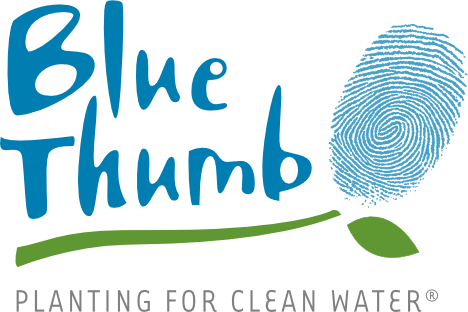


 Gardening equipment purchases that total up to, but no more than $50 (trowels, gloves, etc.)
Gardening equipment purchases that total up to, but no more than $50 (trowels, gloves, etc.)
